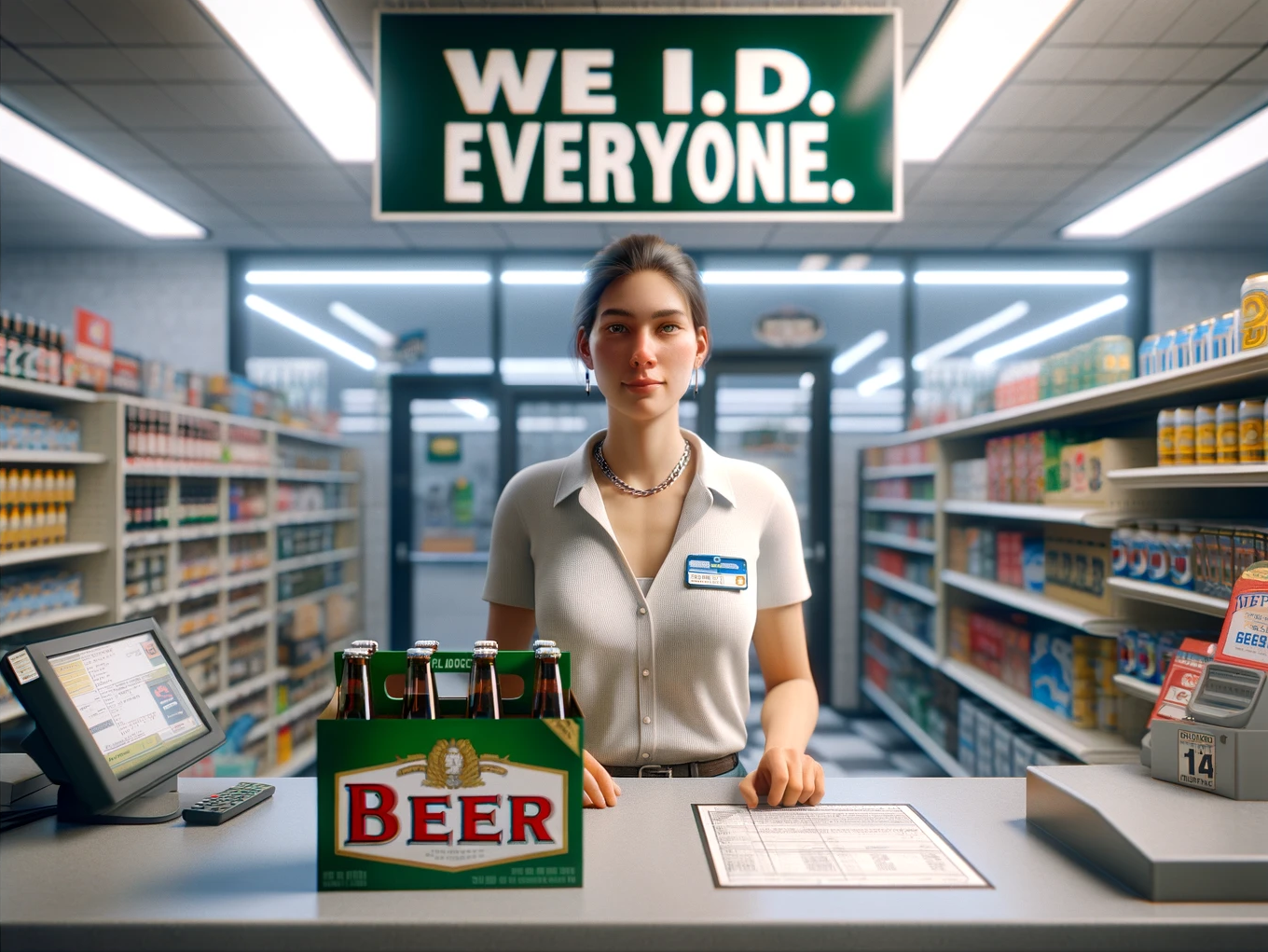Summary
The physical world is full of zero trust examples, but they gather attributes for the access control decisions in a very different way than we're used to online.

Presenting your ID to buy beer is used so often as an example of how verifiable credentials work that it's cliche. Cliche or not, there's another aspect of using an ID to buy beer that I want to focus on: it's an excellent example of zero trust
Zero Trust operates on a simple, yet powerful principle: "assume breach." In a world where network boundaries are increasingly porous and cyber threats are more evasive than ever, the Zero Trust model centers around the notion that no one, whether internal or external, should be inherently trusted. This approach mandates continuous verification, strict access controls, and micro-segmentation, ensuring that every user and device proves their legitimacy before gaining access to sensitive resources. If we assume breach, then the only strategy that can protect the corporate network, infrastructure, applications, and people is to authorize every access.From Zero Trust
Referenced 2024-02-09T08:25:55-0500
The real world is full of zero trust examples. When we're controlling access to something in the physical world—beer, a movie, a boarding gate, points in a loyalty program, prescription drugs, and so on—we almost invariably use a zero trust model. We authorize every access. This isn't surprising, the physical world is remarkably decentralized and there aren't many natural boundaries to exploit and artificial boundaries are expensive and inconvenient.
The other thing that's interesting about zero trust in the physical world is that authorization is also usually done using Zero Data. Zero data is a name StJohn Deakin gave to the concept of using data gathered just in time to make authorization and other decisions rather than relying on great stores of data. There are obvious security benefits from storing less data, but zero data also offers significantly greater convenience for people and organizations alike. To top all that off, it can save money by reducing the number of partner integrations (i.e., far fewer federations) and enable applications that have far greater scale.
Let's examine these benefits in the scenario I opened with. Imagine that instead of using a credential (e.g., driver's license) to prove your age when buying beer, we ran convenience stores like a web app. Before you could shop, you'd have to register an account. And if you wanted to buy beer, the company would have to proof the identity of the person to ensure they're over 21. Now when you buy beer at the store, you'd log in so the system could use your stored attributes to ensure you were allowed to buy beer.
This scenario is still zero trust, but not zero data. And it's ludicrous to imagine anyone would put up with it, but we do it everyday online. I don't know about you, but I'm comforted to know that every convenience store I visit doesn't have a store of all kinds of information about me in an account somewhere. Zero data stores less data that can be exploited by hackers (or the companies we trust with it).
The benefit of scale is obvious as well. In a zero data, zero trust scenario we don't have to have long-term transactional relationships with every store, movie, restaurant, and barber shop we visit. They don't have to maintain federation relationships with numerous identity providers. There are places where the ability to scale zero trust really matters. For example, it's impossible for every hospital to have a relationship with every other hospital for purposes of authorizing access for medical personal who move or need temporary access. Similarly, airline personal move between numerous airports and need access to various facilities at airports.
Finally, the integration burden with zero trust with zero data is much lower. The convenience store selling beer doesn't have to have an integration with any other system to check your ID. The attributes are self-contained in a tamper-evident package with built-in biometric authentication. Even more important, no legal agreement or prior coordination is needed. Lower integration burden reduces the prerequisites for implementing zero trust.
How do we build zero data, zero trust systems? By using verifiable credentials to transfer attributes about their subject in a way that is decentralized and yet trustworthy. Zero data aligns our online existence more closely with our real-world interactions, fostering new methods of communication while decreasing the challenges and risks associated with amassing, storing, and utilizing vast amounts of data.
Just-in-time, zero data, attribute transfer can make many zero trust scenarios more realizable because it's more flexible. Zero trust with zero data, facilitated by verifiable credentials, represents a pivotal transition in how digital identity is used in authorization decisions. By minimizing centralized data storage and emphasizing cryptographic verifiability, this approach aims to address the prevalent challenges in data management, security, and user trust. By allowing online interactions to more faithfully follow established patterns of transferring trust from the physical world, zero trust with zero data promotes better security with increased convenience and lower cost. What's not to like?
Photo Credit: We ID Everyone from DALL-E (Public Domain) DALL-E apparently thinks a six-pack has 8 bottles but this was the best of several attempts. Here's the prompt: Produce a photo-realistic image of a convenience store clerk. She's behind the counter and there's a six pack of beer on the counter. Behind her, clearly visible, is a sign that says "We I.D. Everyone" .




